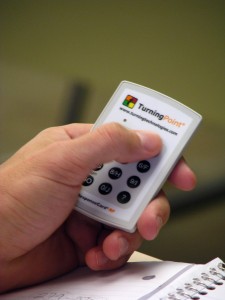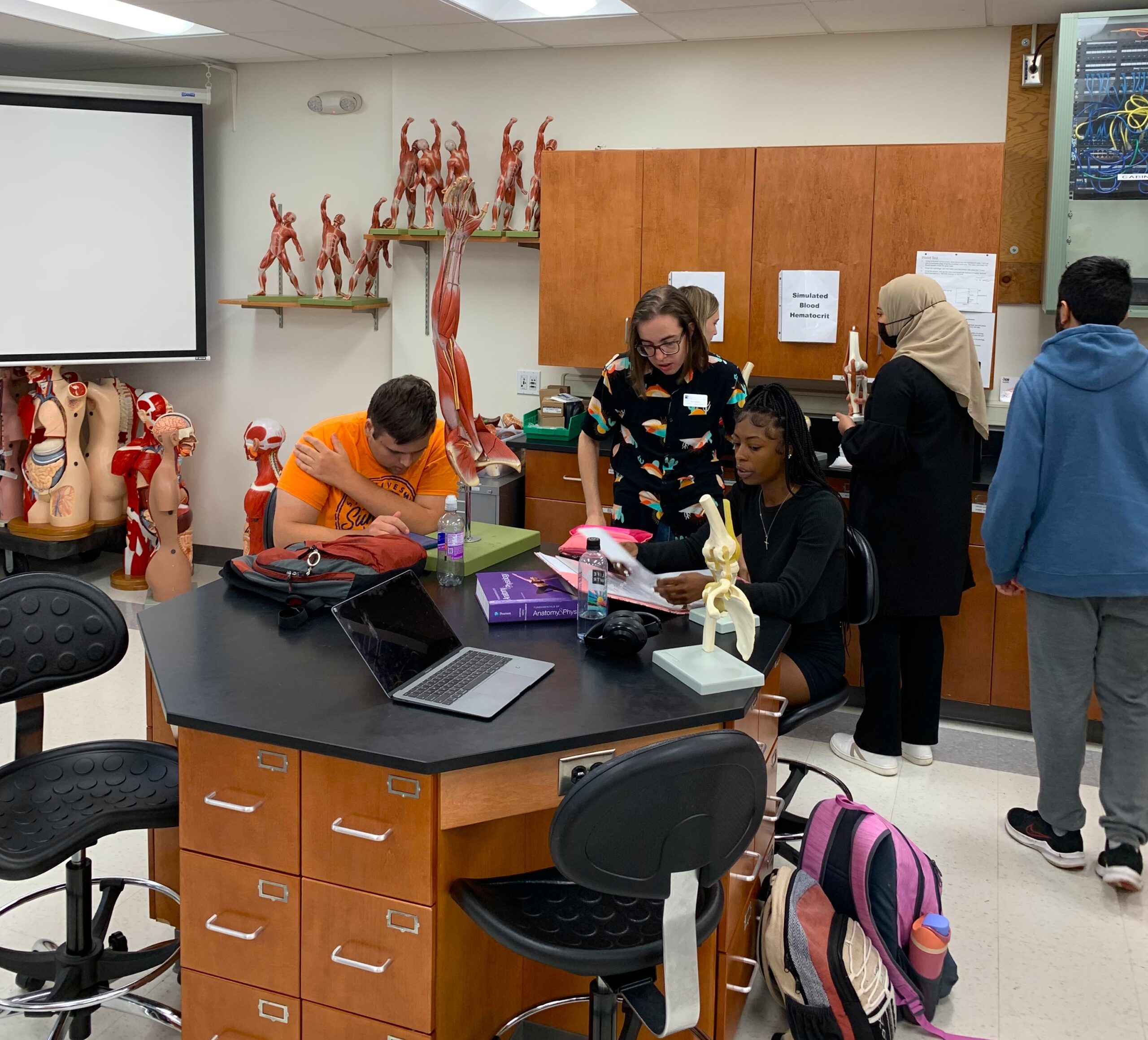The response cards, or clickers, are still under their trial run at STLCC-Meramec. If proven resourceful, this new tool might be implemented in different classes next year.

Andrea Royals
– Staff Writer –
New technology is clicking its way into many classrooms as professors strive to provide students with a more stimulating learning experience. Response Cards, or what most refer to as clickers, are hand-held remote controls that allow students to actively participate in lectures by pressing one of 12 buttons on a small number pad.
The clickers enable professors to collect and analyze data from each student in a certain class simultaneously. Through use of a Microsoft Power Point slide, a professor can display a multiple choice question to students, who in turn choose an answer. After students have submitted their responses, the teacher can gather the solutions and display them on a graph to the class, documenting what percentage of students chose a particular answer.
“You plug and play,” said Linda Hubble, the senior instructional designer for the Center of Teaching and Learning. “The [student’s] clicker signals to the instructor’s computer to generate a response.”
Hubble, who used the device while teaching Children’s Literature over the summer, found that the response card could prove to be a helpful learning tool while reviewing for tests with her class.
Multiple choice questions over course material, however, are not the only thing professors can do with the response card. Hubble also used the device to measure students’ understanding of the material. By indicating how well the class was following along with a lecture, Hubble was able to give further explanation to details that may have been difficult for students to comprehend.
“I appreciate the immediate feedback,” Hubble said.
The response cards are still under a trial run at STLCC-Meramec, Hubble said, and the administration may decide not to use them by next year. Although she did not have any difficulty with the device and strongly promotes the use of the clicker in classrooms, other members of the faculty are not as fortunate as Hubble.
Lillian Seese, mathematics professor, who had been eager to show the device to her algebra class, ran into a few technical difficulties when introducing the clicker to her students. She had prepared a series of multiple choice questions for her class to answer, ranging from basic algebra questions to word problems. After working the problems out on scratch paper, each student entered his or her response on the clicker. Unfortunately, Seese’s computer could not assess the polls and no graph was shown to document which percentage of students chose a common answer.
“It might be more helpful if we just answered these questions out loud,” said Miclle Pattiz, an algebra student in Seese’s class.
Other students agreed, but saw how the device could potentially work in a learning environment if operated effectively.
“We’re still just learning how to use them,” said Seese about the faculty. “We could have used more hands-on training.”
The faculty attended a brief seminar on the device, but it offered little chance for professors to test the clickers out on their own.
Despite the setbacks, other professors found the clickers to be beneficial and did not encounter any technical difficulties, Seese said.
As Meramec takes steps to implement new technology on campus, the Response Cards may provide for an engaging learning experience, stimulating class participation and overall comprehension among students.











